Introduction
My goal for the final project was to create a custom 3d printed wearable. For this I designed a top that could be printed in PLA but with seams that would allow the flexibility needed for wearing the garment. The main construction of the top consists of what I call panels that are then laced together with ribbon. Designing the top in such a way not only adds to its functionality but the lacing contributes to the aesthetic appeal. The computational component of the top came from creating a lace-like pattern that is printed on each panel. The final design of the pattern being a repeating floral design. I chose not to include any interconnecting pieces as I was concerned that having anything print between the primary pattern would cause the design to fade into the background.
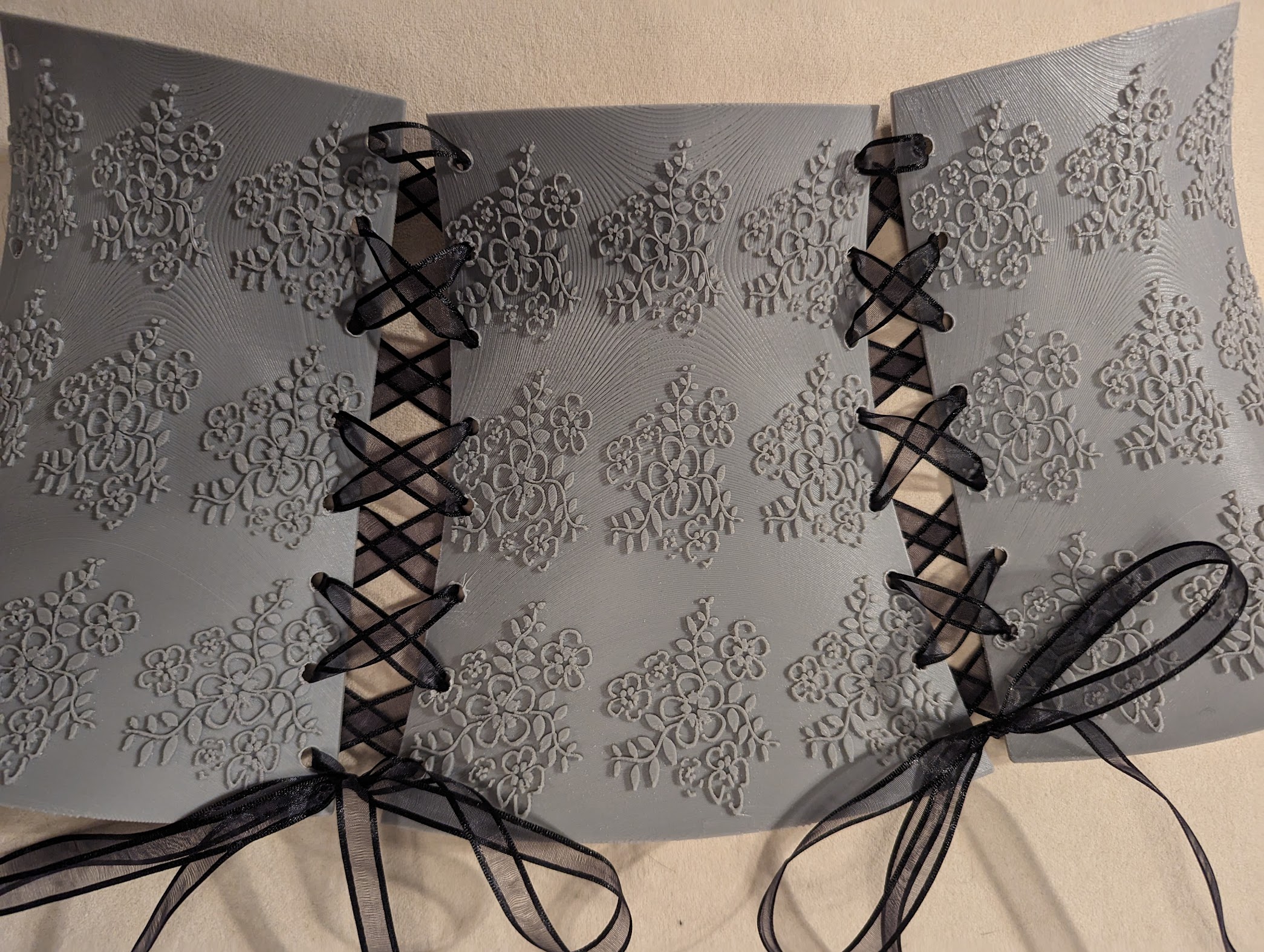
Background
Kirsten Lussenburg
Lussenburg’s thesis contributed a lot to 3d printed textiles. While I didn’t use much knowledge gleaned from reading it in this particular project it was still and interesting read. It also provided a good source to find additional resources about printing wearables. I also hope to implement different materials in the future in which case the material will be extremely helpful.
Iris van Herpen
Iris van Herpen has several computationally created piece that have been created with additive manufacturing. She proved to be a huge inspiration for my final piece and I hope that one day I will be able to create pieces half as intricately as the piece that she designs.
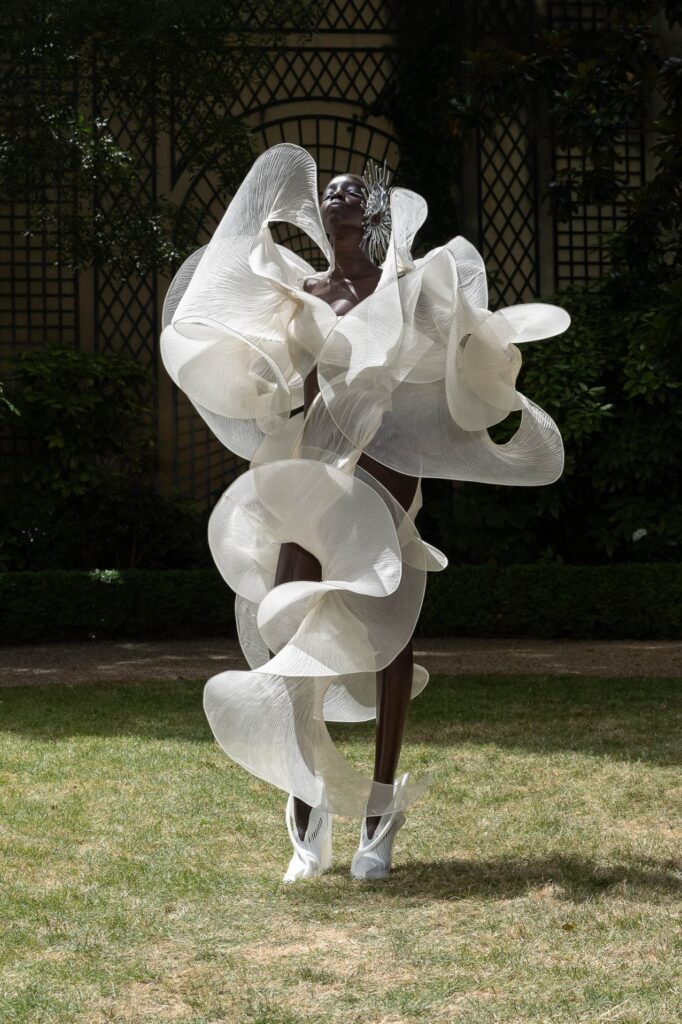

https://www.irisvanherpen.com/
In Bloom Dress by XYZ Workshop
The in bloom dress probably provided the largest source of inspiration for my wearable artifact. It has both the flexibility and aesthetic that I was initialing going for prior to scaling down my project to the time and materials available. I am however disappointed that I was not able to find much more information on the dress than what was proved in the below youtube video.
Process
*Code can be found at the bottom of the section however some parts are missing due to repeated upload failures
Drawing
My process for creating the flower corset consisted of three primary stages, the first of which was the flower drawing. To create the pattern I hand designed the primary pattern using different curves within rhino. From there I was able to use the base code that we had gone over in class for the tiling project to create a repeated pattern of the original drawing. There were some issue with the tiling that was developed in this method where some of the output wasn’t what I needed and I was never able to figure out how to correct the issue so I simply corrected the tiling in rhino. This wasn’t a huge issue as there were only a couple curves that the output was wrong in. I also chose to copy the resulting pattern into a new file to complete the surface morph as I was worried that keeping everything together would cause my computer to crash. The final result from the tiling can be seen below.
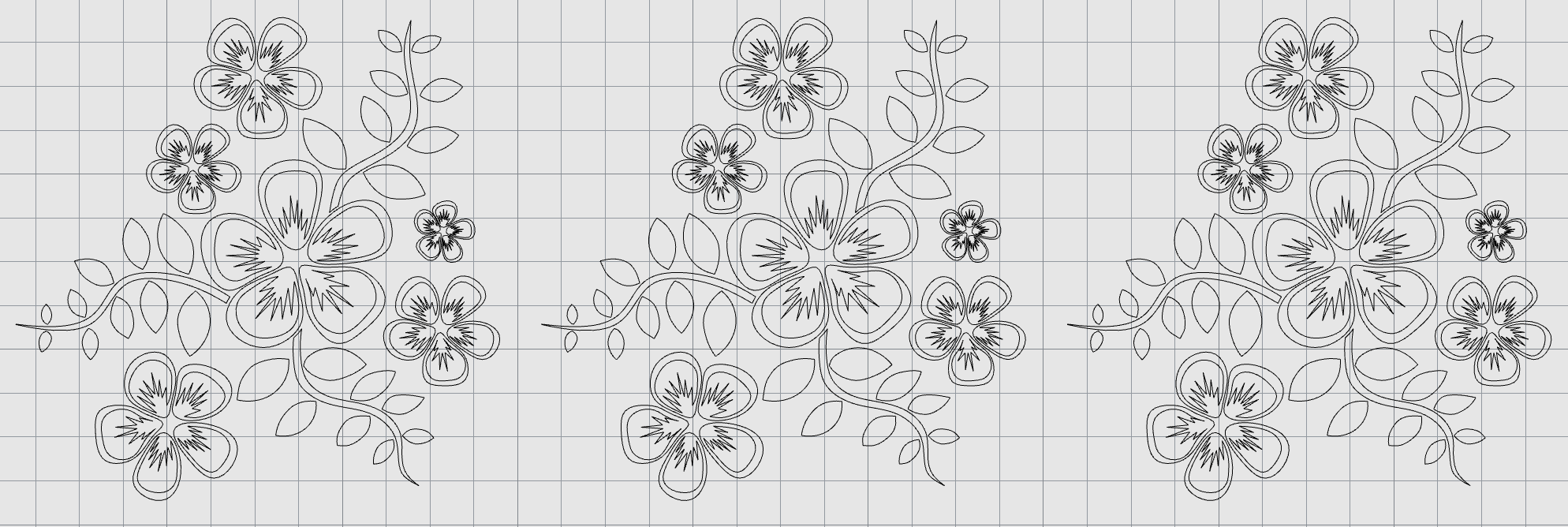
Panels
For the panels design I knew I would have to make the pieces contour perfectly to my torso as otherwise due to the material being used the corset would be quite uncomfortable. Originally I had planned to individually design each panel but then it occurred to me that I could use the same surface morph method used to add the flower pattern to create the individual panels. To do so I created a surface that was set to my measurement and then just created a square tiling that was morphed over the surface. This created the panels that I needed to construct the corset.
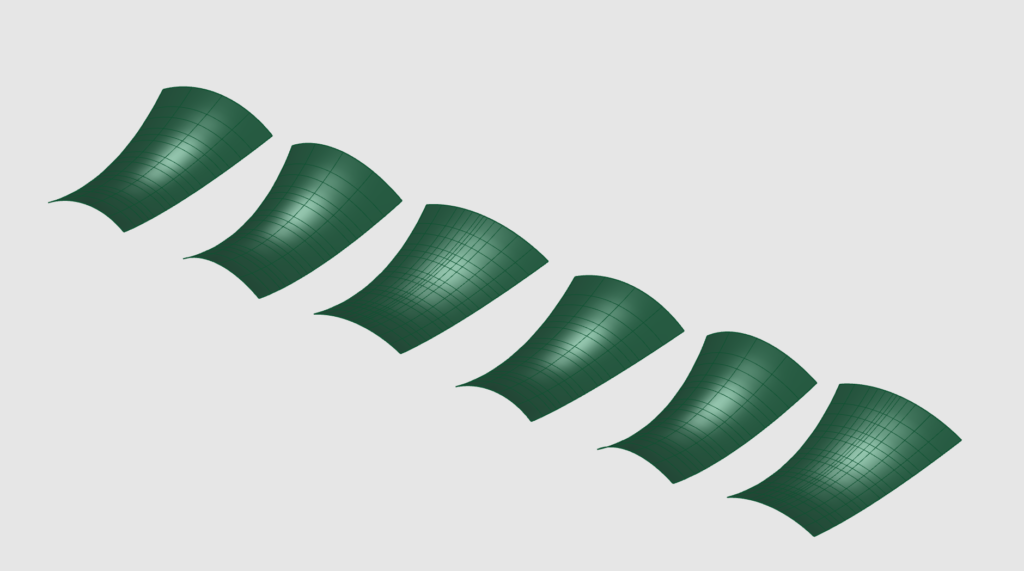
Double Tiling
The next step was to take the morphed torso tiles and then morph the flower pattern on top of each of them. This proved a little more difficult than anticipate primarily due to not fully understanding rhino objects at the beginning of the project. However with some instruction I was able to get the correct types and get the flowers morphed to the panels. To do so the primary thing I needed to insure was that the flower pattern was bounded prior to morphing. This then allowed me to get the closed breps that could then be used in solid union which is required for the piece to get printed as a single unit.
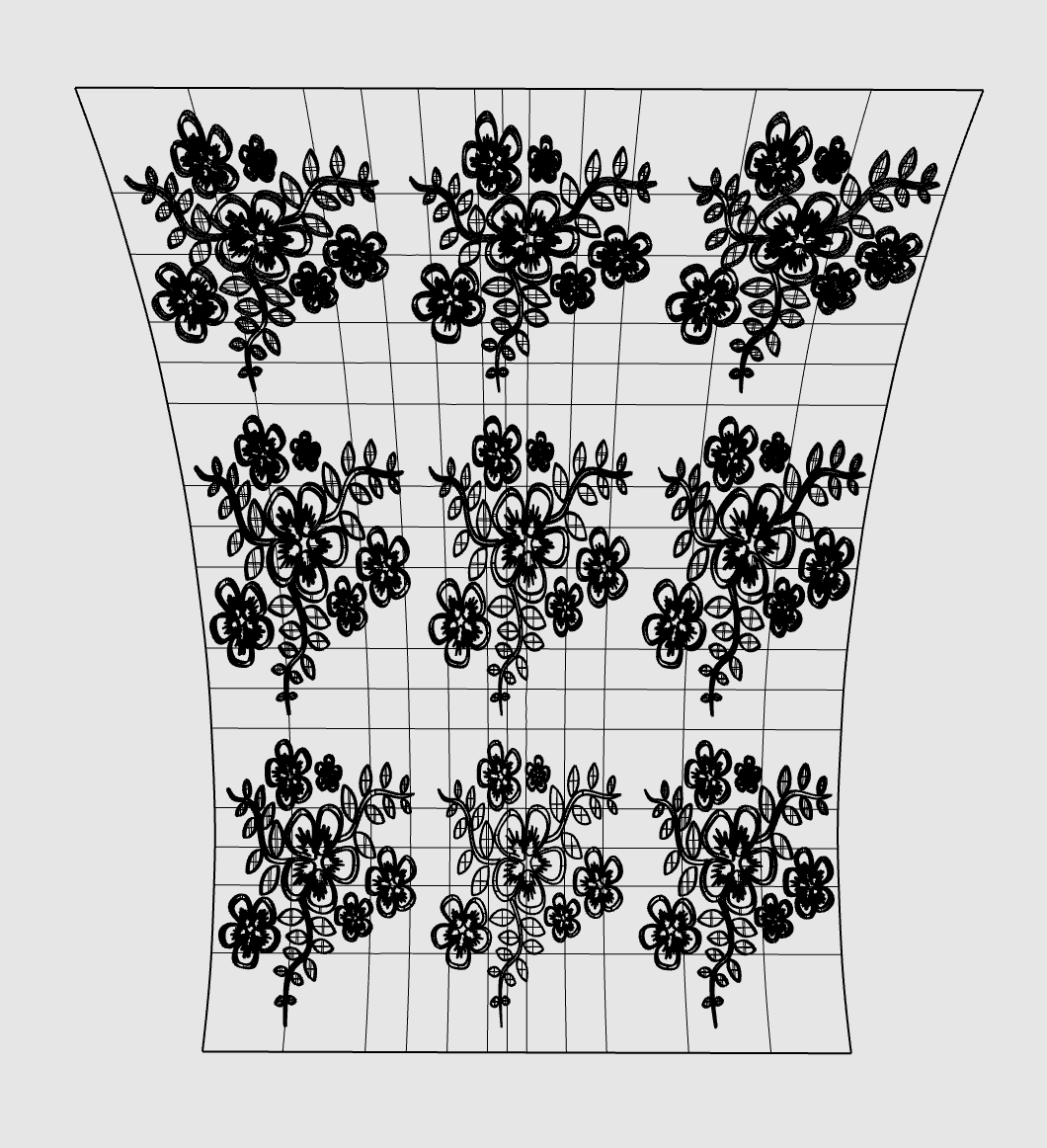
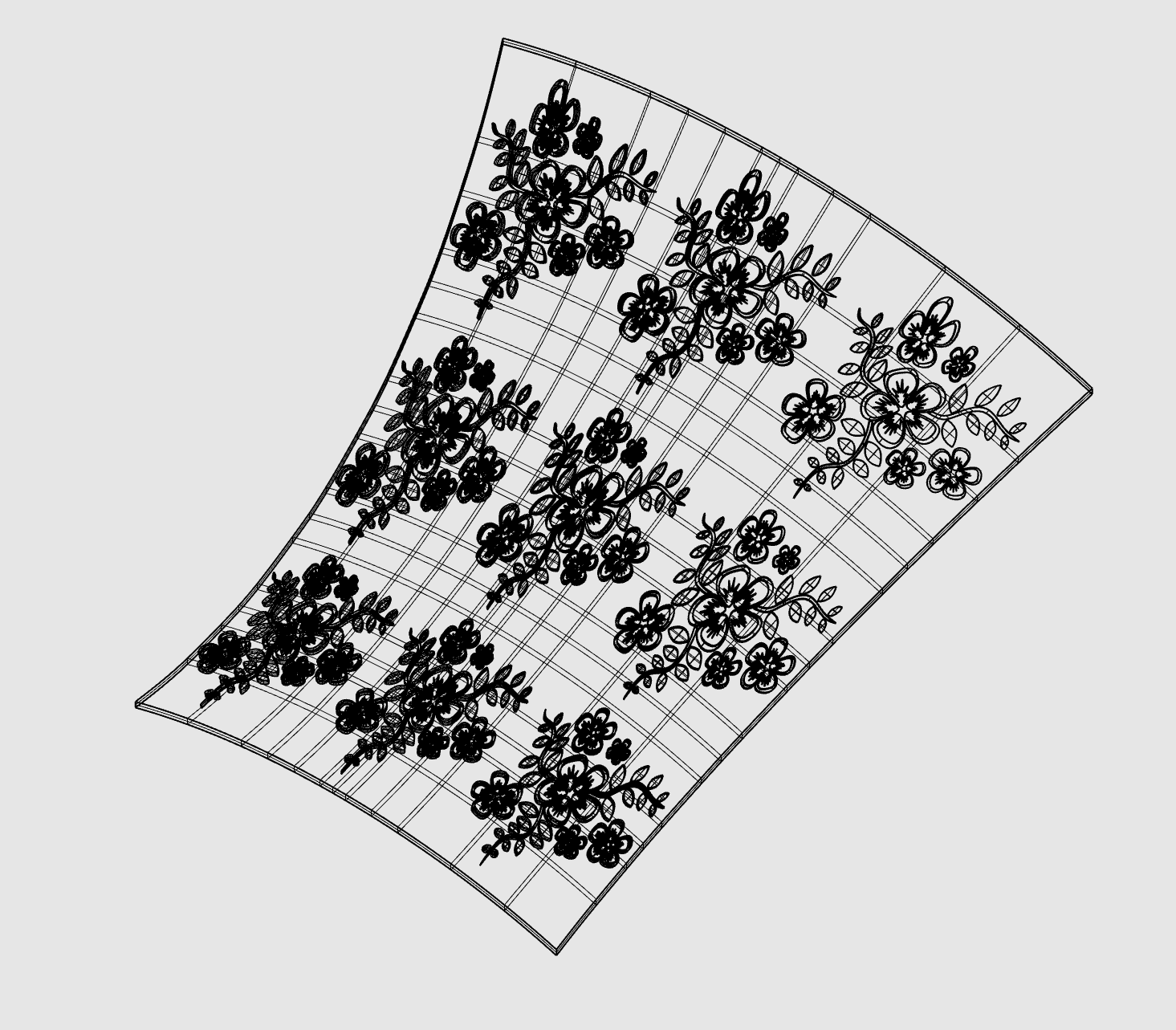
Outcome
I succeeded in my primary goal of creating a 3d printed wearable, however the final object did deviate from my original design. My drawing for the proposal had a total of 8 panels, 6 for the torso section and 2 bra like cups, while the final design only had the torso structure and the final object only three of those panels. This was primarily due to the time constraint of how long each panel took to print. Unfortunately, I underestimated the time I would need for the printing process in my timeline. However, given that this was the only hiccup along the way I am quite happy with how the project turned out.
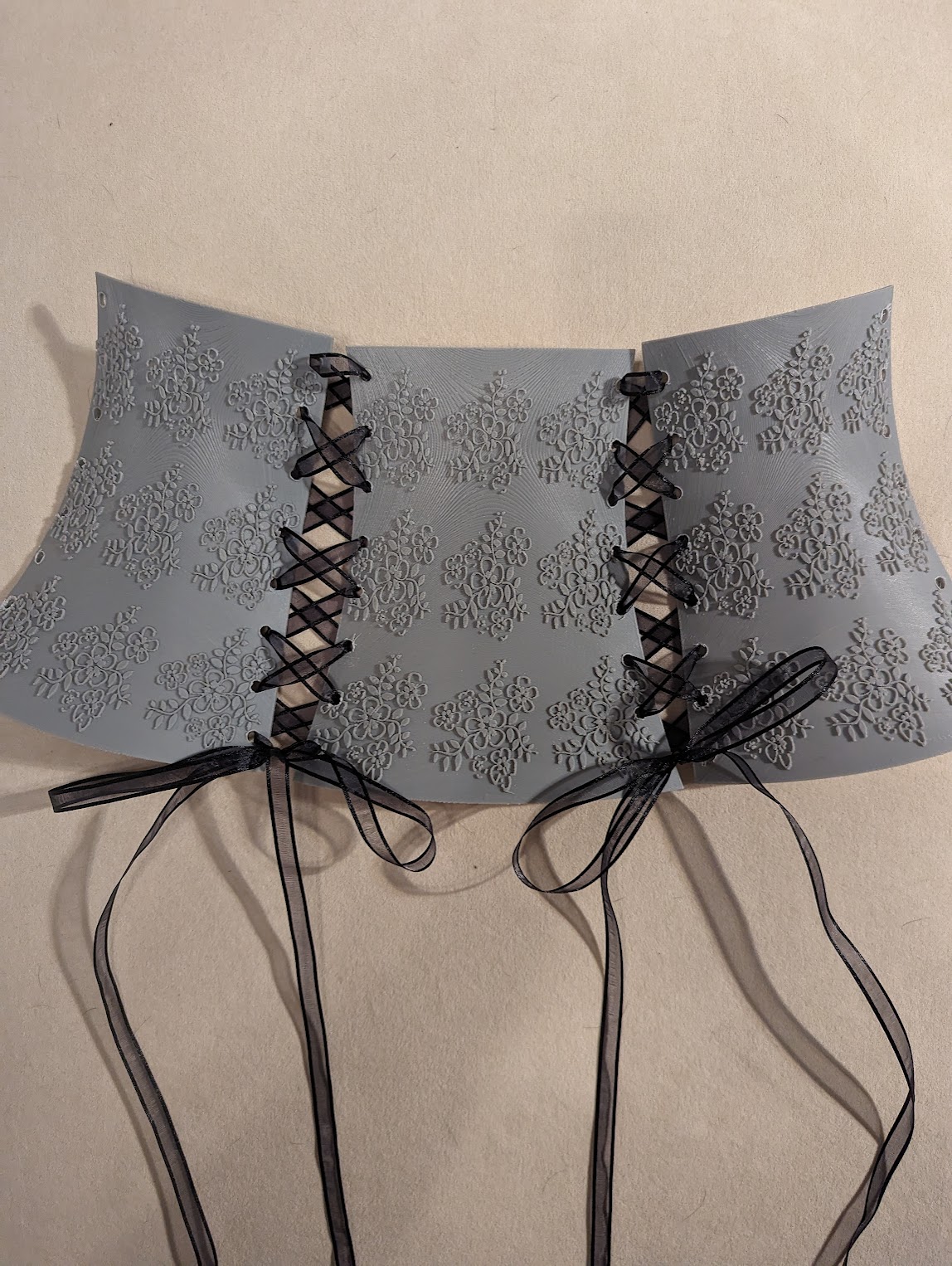
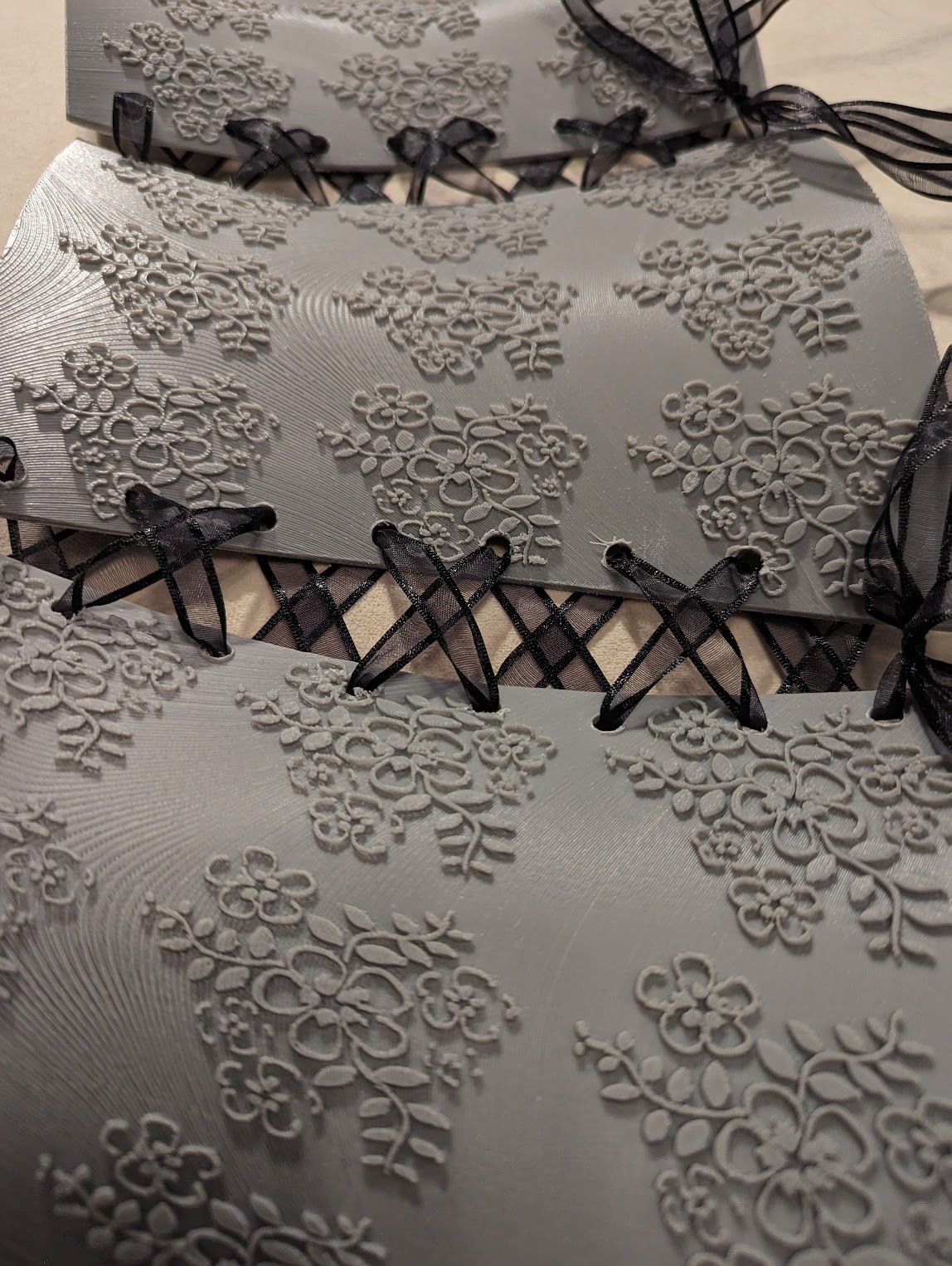
For the final object the corset had the flower design printed out as a raised pattern so it would be clearly seen against the background panel. Each panel had the pattern repeated 6 times so as the tiling effect could be seen while leaving the design large enough for the details to still be printed. For the object being a corset printed of stiff PLA it fits remarkably well and can be worn for an extended period of time without discomfort. You just have to make sure to bend at your knees to pick anything up.
Future work
There are several directions I would love to take this project in the future. I have always loved fashion, so the union of it with CS (something else I love) is highly inspiring. The first thing I would like to do is experiment with different printing materials. I would love to find something that could be used in a normal desktop printer that offered enough rigidity to hold a delicate shape while still being flexible enough to be more comfortable to the wearer. The second thing I would love to do to expand the project is figure out how to create fully 3d flowers rather than a planner pattern and use that to tile the panels. From there I would like to remove the solid panels and create a texture to more fully resemble lace.
Reflection
One aspect I have always really enjoyed in CS is the creativity it allows for. Whether this is in how you solve a problem or in the UI of a program, however prior to this class I hadn’t even realized you could use computation to fully fabricate real world objects. For whatever reason it was a whole realm I hadn’t discovered yet. For this project I think I got just a tiny taste of what is possible, but I am so excited to be able to continue to learn and develop in this area. I certainly learned more about Rhino. I am also excited that I was able to complete a wearable artifact because now I will be able to wear it in the future. Especially as it turned out way more comfortable than I had anticipated it would be.